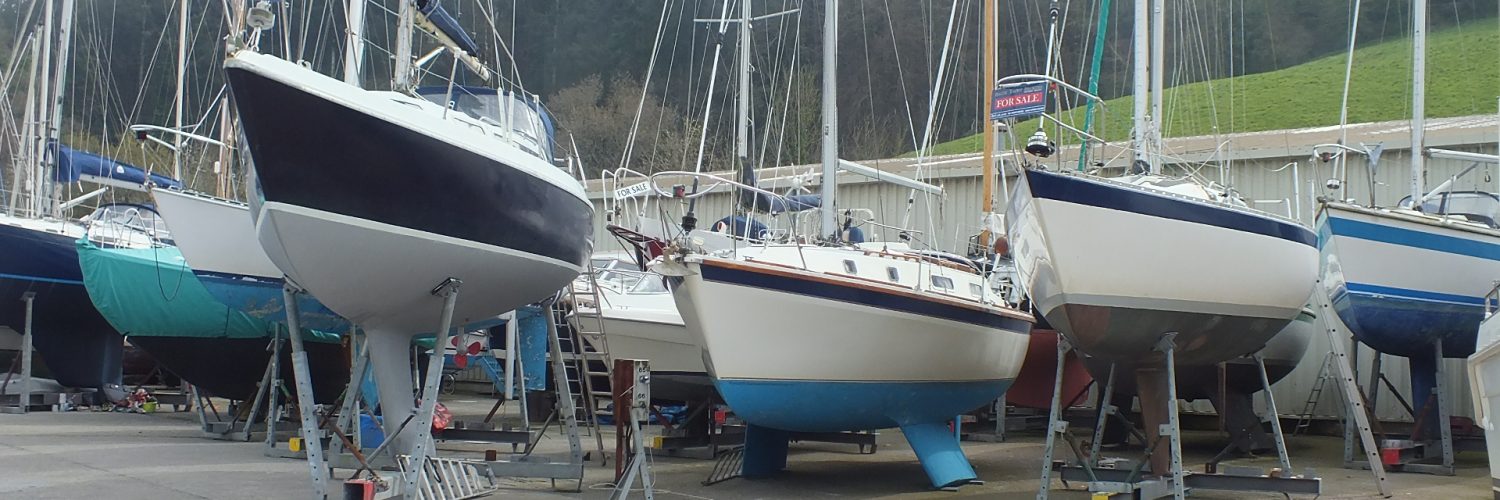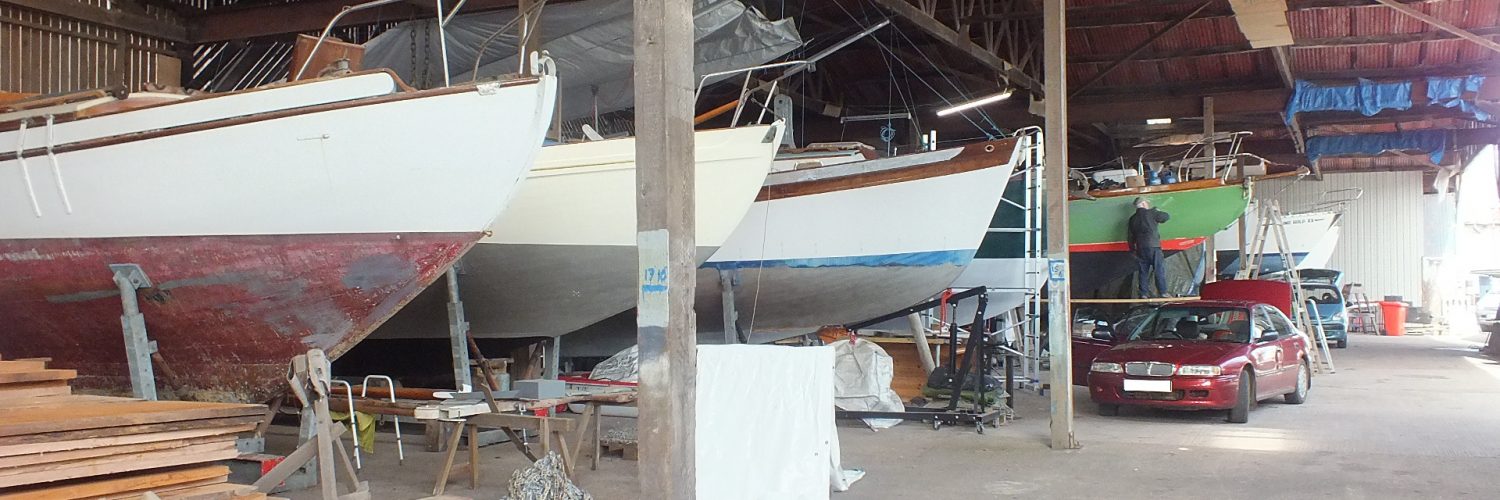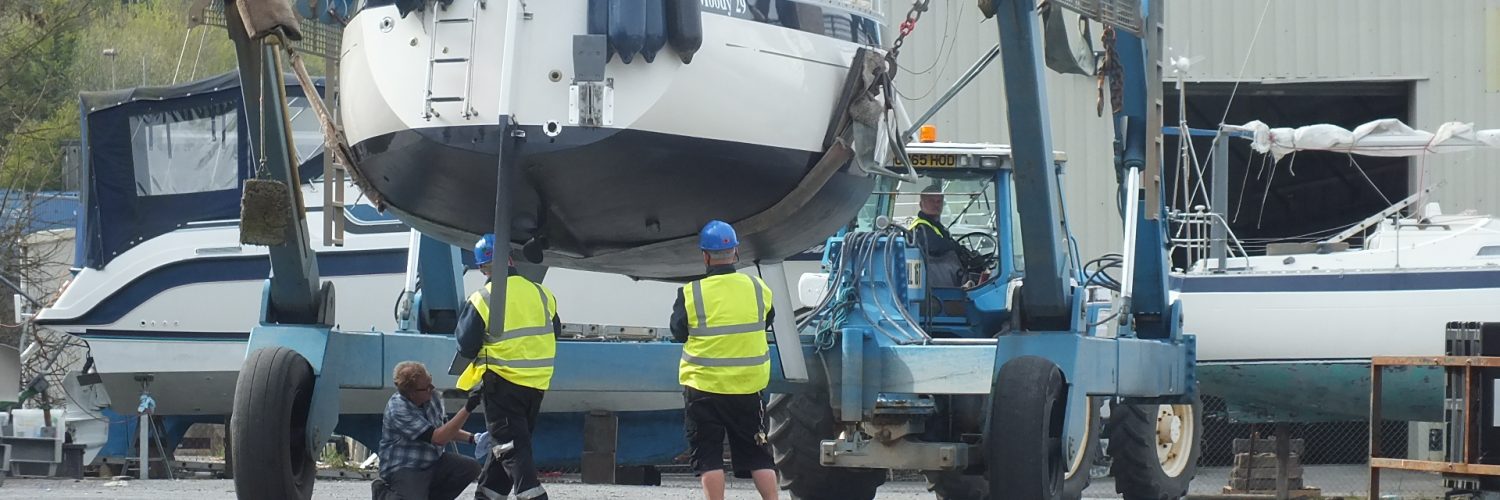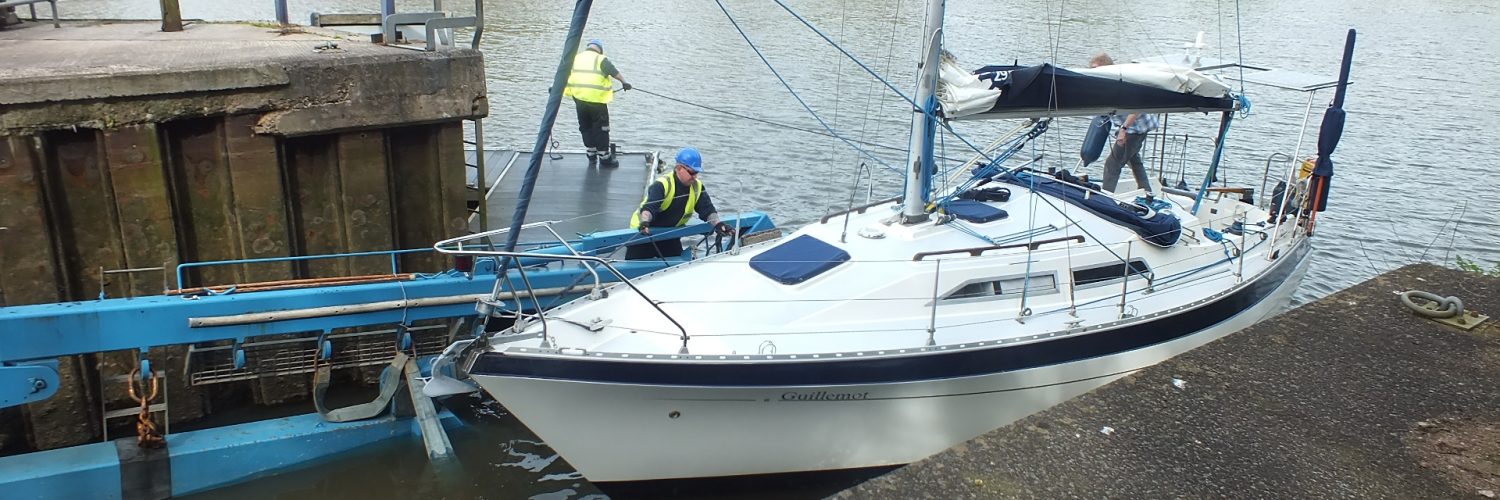Baltic Wharf Boat Yard
Baltic Wharf is a busy marine and business centre situated at the tidal head of the River Dart in Totnes just 6 miles from Torbay and 8 miles from Dartmouth. We are within walking distance of the town centre leading to cafes, pubs, restaurants, shops and also a mainline railway station.
- Baltic Wharf has a dedicated Sales Centre area within the boatyard making it the ideal place to sell or purchase a boat.
- The boatyard provides prime concrete and hard-standing areas with ample points for electricity and water.
- The crane and hoist equipment on site allow flexible lifting and re-launching.
- The slipway can be accessed three hours either side of the tide and boats can arrive on trailers, road transport throughout the day.
- Baltic Wharf is the only boatyard on the river that can receive boats up to 50ft long by road transport depending on the weight.
- On site we have many marine related businesses including boat repairs, rigging and marine engineers.
- Monday to Friday 9am to 5pm. Saturday and Sunday 9.30am to 4.30pm. Extended opening hours (typically till 8pm) during busy times in April and May.
- We will be closed for 10 full days over the Christmas period, during which time there will be no yard access at all. We carry out security checks regularly.
Baltic Wharf consists of a small, longstanding team who make it a friendly and stress free environment to store, maintain and sell your boat. Also on site we have container storage, car parking and serviced office units with free parking.
History
Early development
The area of the river bank, now known as the Baltic Wharf, existed as a natural feature of the rivers course leading upstream for the first landing place for Totnes – St Peters Quay, with its associated chapel roughly on the site of the Steam Packet’s car park. Possible uses for this stretch of riverbank in the 10th to 14th centuries would have been to moor fishing vessels and small craft associated with St Peters Quay.
Later development of Town Quays in the early 15th century, on either side of the bridge, seems to have annexed the river bank downstream of St Peters Quay. During the Tudor period it is quite likely that fishing and associated industries existed here owing to the existence of Fish Chowter’s (Chowder’s?) lane which is accessed from St Peters Quay.
The river had been choked from mine waste from tin mining on Dartmoor in the late 16th century greatly altering the character and use of the whole river Dart because of the need for deeper water further down stream of the town quays by the bridge.
The need for large quays to take and export cargoes seems to have waned in the 18th century, this stretch of river being pictured as pastoral strip of grassed river bank in Tomkin’s painting of 1760.
Developments during the 19th century
In the 1830’s the Duke of Somerset had redeveloped the area around the town’s bridge and its quays. The most significant event however was the start of dredging the river. For the land which was to become Baltic Wharf, dredging provided deeper water for larger shipping which could now ply the river under steam and not oar power. The gravel and sand produced by the dredging, when washed and graded, made an excellent building material, in great demand by the emerging conurbation of Torbay. The warehousing needed for the sand and gravel gave rise to the stone buildings at Sand Quay next to the Baltic Wharf.
1897 Reeves Timber importers landed their first cargo of timber from Russia in Totnes. Totnes had been chosen partly out of circumstances owing to the industrial action at Plymouth and also because of the railways branch line that came onto the new town quays (1850) which lay on the site of the Town Marsh and the 18th century Bowling Green.
Expansion during the 20th century
As the Reeves Company expanded into the first half of the 20th century, so did its need to store very large quantities of timber. The river bank that was to become Baltic Wharf was the obvious site for expansion as it linked up with the new town quay, opposite the island.
At the outbreak of the 2nd World War, Totnes provided an excellent site for boat building, far enough up the river so as to be hard to detect. The firm of Frank Curtis, based in Looe, that produced and fitted out wooden Mine Sweepers, essential to keep Britain’s shipping lanes free of mines. The Frank Curtis yard employed in excess of 600 people, a figure possibly totalling several thousand when one includes all the ancillary staff. Mine sweepers were produced on three slipways in front of the Reeves timber wharf.
Also during the 2nd World War period American Army engineer divisions were very active upstream of the bridge, on the site of the old race course, constructing landing craft, barges and pontoons for bridges, which would eventually lead to success in the Normandy invasion and the end of the war in Europe.
Reeves timber yard and transition to leisure
After the war, Reeves became the largest employer in the town going from strength to strength developing the wood yards downstream of the Steam Packet into the Baltic Wharf in the early 1960’s. The wharf development was done in close collaboration with the Totnes Foundation Governors who owned the town quays.
A turning bay for larger shipping was added in the 1970’s paving the way for more timber imports. The Bres Line, a Danish company, provided some of the largest imports of timber. Bres line ships were designed with strong hulls to operate in the Baltic Sea; this also enabled them to operate in the Dart with its low tides and shifting sand banks.
Reeves closed their business in 1995 on the basis of a company merger and the need for a deeper draft wharf for bigger boats. The departure of Reeves left the Baltic Wharf site open for development.





